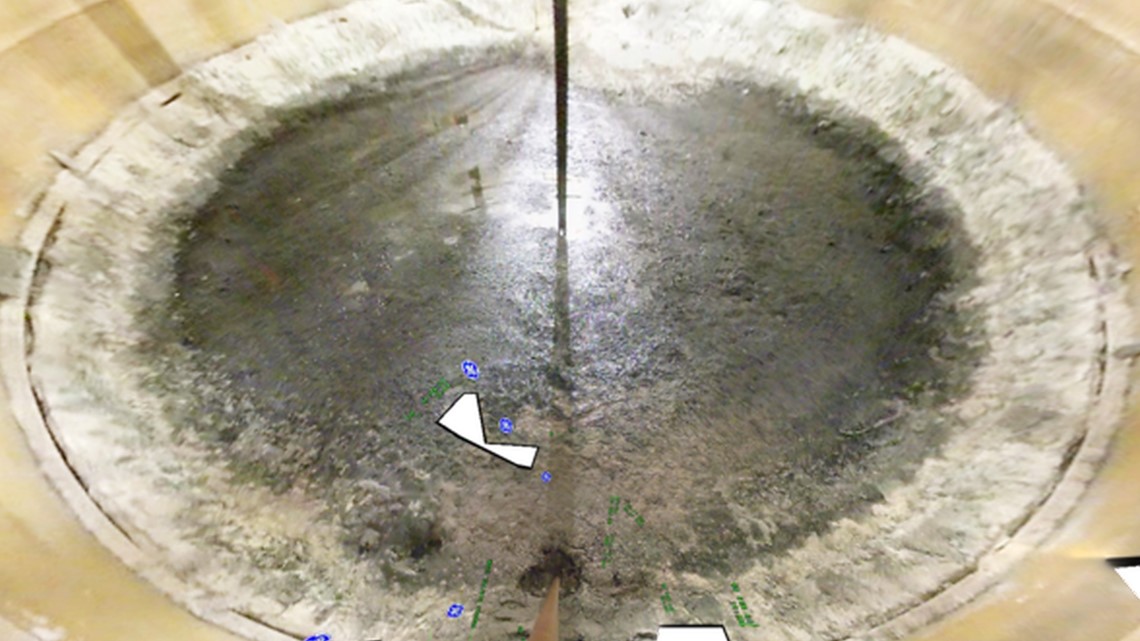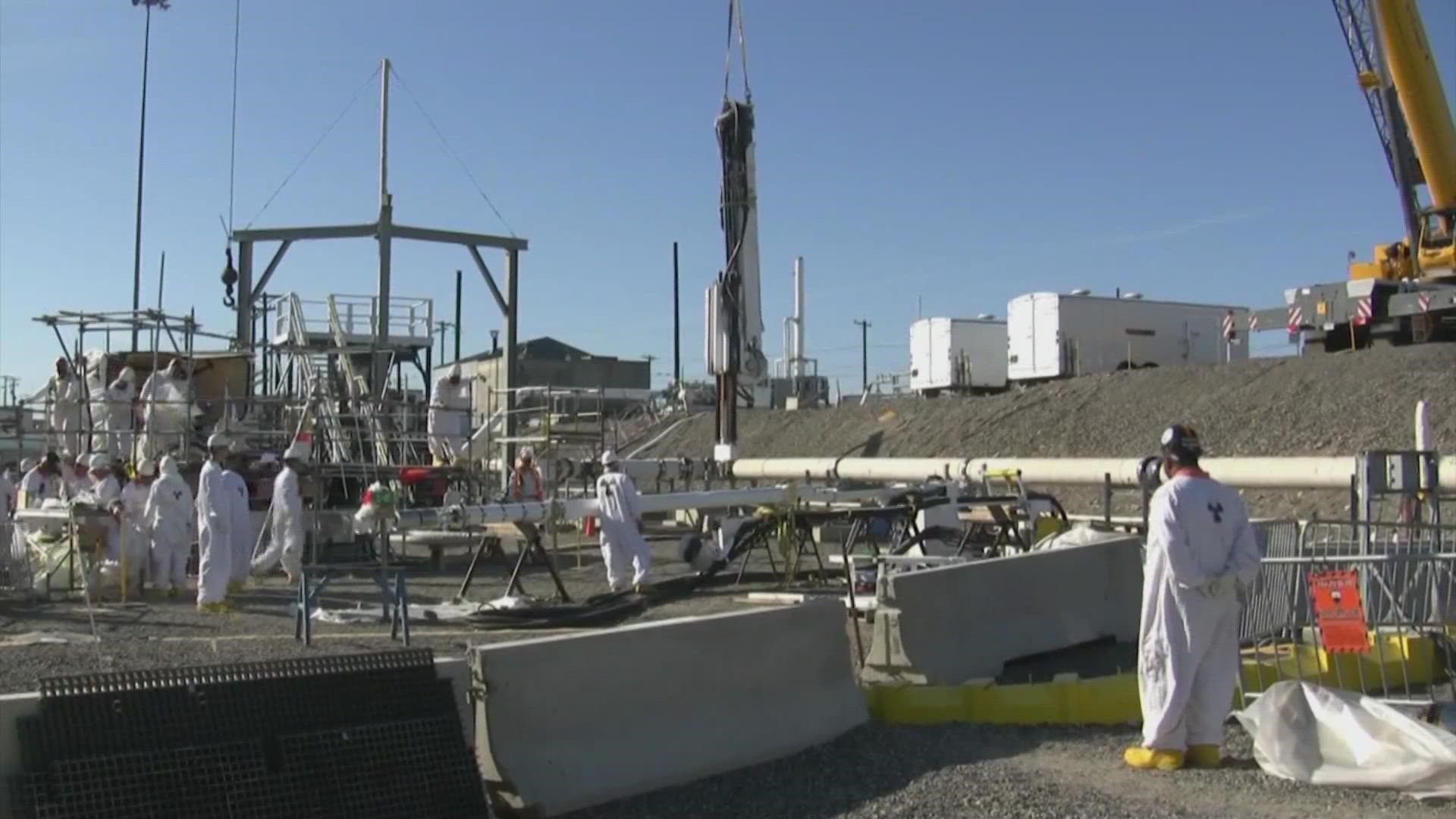BENTON COUNTY, Wash. — The Washington State Dept. of Ecology (Ecology) and the U.S. Dept. of Energy (USDOE) have signed an Agreed Order over the leaking single-shell tank, known as B-109, at Hanford.
The agreement says that by August 2024, regulators will consider a new date to retrieve the nuclear waste from two leaking single shell tanks at Hanford.
The current retrieval date is scheduled for two decades from now, although state and federal law says if a tank is leaking nuclear waste, it must be pumped immediately, or whenever is feasible.
Pollet is the legislature’s top authority on Hanford. He said he is “heartbroken” over this Order.
“Sadly, this agreement is a dereliction of Washington state’s duty to protect our Columbia River and groundwater from high-level nuclear waste. If the state cannot enforce our environmental waste laws, it will be up to the public and the tribes to enforce the law,” Pollet said.
According to Ecology, under the new Order, the USDOE will:
- Cover the leaks with surface barriers to prevent rain or snowmelt from seeping into the tanks and slow the migration of leaked waste toward the groundwater.
- Develop a response plan for future leaks from single-shell tanks.
- Evaluate the viability of installing a ventilation system to evaporate liquid waste in Tank B-109.
- Evaluate conditions in and around the leaking tanks to determine if additional work is needed to prevent liquids from getting in.
- Explore ways to accelerate the schedule to retrieve waste from leaking tanks.
The state announced B-109 was leaking in April 2021. However, tank monitoring data from the USDOE, which owns Hanford, shows a significant drop in the tank’s levels since 2019.
A delay in reporting a leaking nuclear waste tank is also a violation of state and federal law.


A spokesperson from the Department of Energy, which owns Hanford, said the steps outlined in the Order list the best path forward, and that they are in compliance with all federal and state environmental laws.
"The leaking tanks do not pose a risk to the Hanford workforce, the community, or the Columbia River, and the planned measures in the agreement will further reduce the risk of contamination reaching groundwater," said Geoff Tyree, spokesperson for the USDOE at Hanford. "The Department appreciates the effective collaboration with the Ecology team in reaching an agreement that supports our continued focus on safe, efficient, and effective stewardship, treatment, and disposal of tank waste."
Tank B-109 is one of two actively leaking tanks at Hanford currently. There have been a total of 69 known leaks at the nuclear reservation. Tank B-109 is 75 years old and holds 123,000 gallons of residual waste. Government regulators suspect approximately 500 gallons of waste are leaking from it into the soil every year. They approximate an additional 300 gallons per year are leaking from tank T-111.
An official from the Washington State Dept. of Ecology, a Hanford regulator, said emptying the tanks now is not feasible.
"Removing the waste immediately from B-109 or T-111 is not possible. In short, removal of this waste will require significant infrastructure construction and funding. This order will help us get there," said Ryan Miller, Dept. of Ecology communications manager. "Hanford’s leaking tanks represent an ongoing problem we’re seeing at the Hanford Site – chronic underfunding of cleanup. If the site continues to be underfunded, the overall costs will skyrocket by billions, the environmental risks will increase, and cleanup completion will be pushed out by decades."
Miller echoed the sentiments of the USDOE by saying the leaks are not a danger to people or the environment.
Hanford is a former military nuclear weapons factory that produced plutonium for nuclear bombs during World War II, then produced plutonium for nuclear warheads during the Cold War. Hanford has been a clean-up-only site since the late 1980s.
Hanford is the most contaminated site in the Western Hemisphere.

